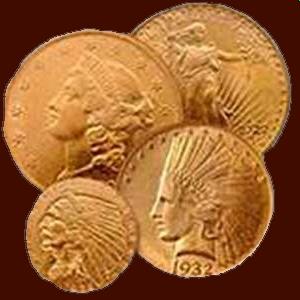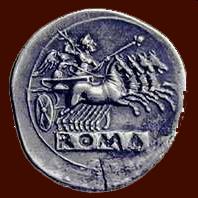




Looking After Your Finds - Identification - Finds

Roman (examples) Mosiac
Powered By Sispro1

Floor Mosiacs
3.
Reference Roman Helmets
Copyright All Rights Reserved by Nigel G Wilcox E-Mail: ngwilcox100@gmail.com
Designed by Nigel G Wilcox
Complimentary Topics
The Paragon Of Metal Detecting
& Archaeology
& Archaeology
Pages
Main Coin Menu
Roman Coins
Menu
Menu
Member NCMD
Roman Menu
Discovered Mosaics Around the UK
End
In mosaics such as these, pagan mythology portrays verses in three different parts of the Bible. The verses reveal that “the Lord, with His great and strong sword, will punish the crooked serpent and slay the dragon” (Isaiah 27), that the Lord “breaks the heads of the dragons” (Psalm 74), and that “now cometh salvation and the Kingdom of our God and the power of his Christ,” for that great dragon, that old serpent Satan is overcome “by the blood of the Lamb” (Revelation 12).
Another frequent pagan motif, the hunt, is used in at least one Romano-British Christian mosaic as a way of bringing to life a psalm regarded by Christians as a key prophecy of Christ. Verse 16 of Psalm 22 says: “For dogs have compassed me: the assembly of the wicked have enclosed me: they pierced my hands and my feet.” Romano-British artists used the hunted deer as an emblem of Christ approaching his passion-the dogs symbolizing those seeking his crucifixion.
The intellectual competition between the many religions was intense during the 4th century. In their missionary zeal for new adherents, the rival religious cults thought nothing of “borrowing” their opponents’ best ideas. The Christians and the Hellenistic cult of Orpheus, for instance, produced rich mosaics that feature Christ and Orpheus, respectively, each controlling-indeed imposing order upon-the forces of nature.
The British Museum owns a mosaic pavement from Dorset that portrays Christ surrounded by personifications of the Four Winds, reflecting the statement in the Gospels of Matthew, Mark and Luke that “He [Christ] commands even the winds and water and they obey him.” At Littlecote, in Wiltshire, Orpheus is shown controlling nature symbolised by personifications of the Four Seasons-and in a now reburied masterpiece at Woodchester, in Gloucestershire, Orpheus is portrayed at the heart of nature, controlling the animal world.
It is on an island off England s south coast, however, that one can see what is perhaps the most philosophically complex mosaic masterpiece from that era. Packed full of pictorial references to almost a dozen characters from Greek and other myths, this amazing mosaic at Brading on the Isle of Wight is dedicated to the twin concepts of sacrifice and salvation.
In the 4th century, it was not just Christianity that was based on the idea that mankind could be saved through the death of a god. Salvation through divine or royal suffering was already an ancient and increasingly popular concept in the pagan world. The central panel of the Brading mosaic shows the severed head of Medusa, consort of Poseidon/Neptune, King of the Sea. In Greek mythology, human disease, a metaphor for human suffering, can only be defeated by the great god of healing, Asclepius, through the use of Medusa s blood, shed at her decapitation. Medusa s severed head is surrounded, in that mosaic, by four other panels, each containing pictorial references to other salvation-based stories.
In pagan tradition, where the gods can be both good and bad-often at the same time divine intervention or mere fate could also result in great harm to humanity. Near Bristol, antiquarians in the 19th century found a spectacularly beautiful mosaic, perhaps one of the finest ever created in Roman Britain, which portrays the legends of Europa and the Bull, Athena and Marsyas and Achilles on the island of Skyros. All are stories about mythological events that had tragic consequences. In the case of Europa, the ultimate result was the creation of an evil, man-devouring monster (the Minotaur). In the second, events led to the flaying alive of Marsyas by Apollo, and in the third myth the great hero Achilles idyllic life on Skyros was the preamble to his death.
The last three stories also symbolize the fate of Romano-British art and culture how Britain s 4th-century Golden Age descended into its cultural nemesis, the Dark Ages. Within just a generation of the creation of the last mosaic masterpieces, Britain had ceased to be a part of the Roman Empire, and its political, cultural and technological fabric was beginning to disintegrate.
Not long after that, large tracts of land were being taken over by German barbarians. The villas were abandoned. The mosaics were buried, first under weeds and undergrowth and then under the debris of collapsed villa roofs and finally under successive layers of decaying vegetation, which over the centuries transmuted themselves into soil and farmland.
Only now, 1,600 years after the last mosaics were laid, are we beginning to rediscover the real meaning of the lost masterpieces for so long hidden beneath the fields of Old England.
Another frequent pagan motif, the hunt, is used in at least one Romano-British Christian mosaic as a way of bringing to life a psalm regarded by Christians as a key prophecy of Christ. Verse 16 of Psalm 22 says: “For dogs have compassed me: the assembly of the wicked have enclosed me: they pierced my hands and my feet.” Romano-British artists used the hunted deer as an emblem of Christ approaching his passion-the dogs symbolizing those seeking his crucifixion.
The intellectual competition between the many religions was intense during the 4th century. In their missionary zeal for new adherents, the rival religious cults thought nothing of “borrowing” their opponents’ best ideas. The Christians and the Hellenistic cult of Orpheus, for instance, produced rich mosaics that feature Christ and Orpheus, respectively, each controlling-indeed imposing order upon-the forces of nature.
The British Museum owns a mosaic pavement from Dorset that portrays Christ surrounded by personifications of the Four Winds, reflecting the statement in the Gospels of Matthew, Mark and Luke that “He [Christ] commands even the winds and water and they obey him.” At Littlecote, in Wiltshire, Orpheus is shown controlling nature symbolised by personifications of the Four Seasons-and in a now reburied masterpiece at Woodchester, in Gloucestershire, Orpheus is portrayed at the heart of nature, controlling the animal world.
It is on an island off England s south coast, however, that one can see what is perhaps the most philosophically complex mosaic masterpiece from that era. Packed full of pictorial references to almost a dozen characters from Greek and other myths, this amazing mosaic at Brading on the Isle of Wight is dedicated to the twin concepts of sacrifice and salvation.
In the 4th century, it was not just Christianity that was based on the idea that mankind could be saved through the death of a god. Salvation through divine or royal suffering was already an ancient and increasingly popular concept in the pagan world. The central panel of the Brading mosaic shows the severed head of Medusa, consort of Poseidon/Neptune, King of the Sea. In Greek mythology, human disease, a metaphor for human suffering, can only be defeated by the great god of healing, Asclepius, through the use of Medusa s blood, shed at her decapitation. Medusa s severed head is surrounded, in that mosaic, by four other panels, each containing pictorial references to other salvation-based stories.
In pagan tradition, where the gods can be both good and bad-often at the same time divine intervention or mere fate could also result in great harm to humanity. Near Bristol, antiquarians in the 19th century found a spectacularly beautiful mosaic, perhaps one of the finest ever created in Roman Britain, which portrays the legends of Europa and the Bull, Athena and Marsyas and Achilles on the island of Skyros. All are stories about mythological events that had tragic consequences. In the case of Europa, the ultimate result was the creation of an evil, man-devouring monster (the Minotaur). In the second, events led to the flaying alive of Marsyas by Apollo, and in the third myth the great hero Achilles idyllic life on Skyros was the preamble to his death.
The last three stories also symbolize the fate of Romano-British art and culture how Britain s 4th-century Golden Age descended into its cultural nemesis, the Dark Ages. Within just a generation of the creation of the last mosaic masterpieces, Britain had ceased to be a part of the Roman Empire, and its political, cultural and technological fabric was beginning to disintegrate.
Not long after that, large tracts of land were being taken over by German barbarians. The villas were abandoned. The mosaics were buried, first under weeds and undergrowth and then under the debris of collapsed villa roofs and finally under successive layers of decaying vegetation, which over the centuries transmuted themselves into soil and farmland.
Only now, 1,600 years after the last mosaics were laid, are we beginning to rediscover the real meaning of the lost masterpieces for so long hidden beneath the fields of Old England.
Courtesy: British Heritage- Travel - David Keys | @BHTravel_ Nov 29, 2024
Courtesy: Re-published Paragon 06.03.25






















